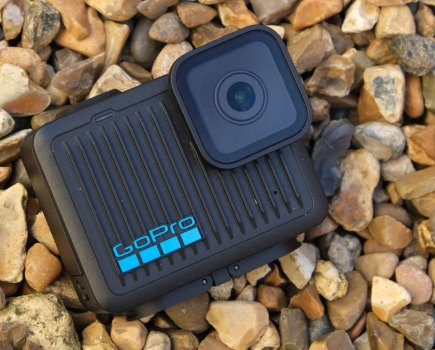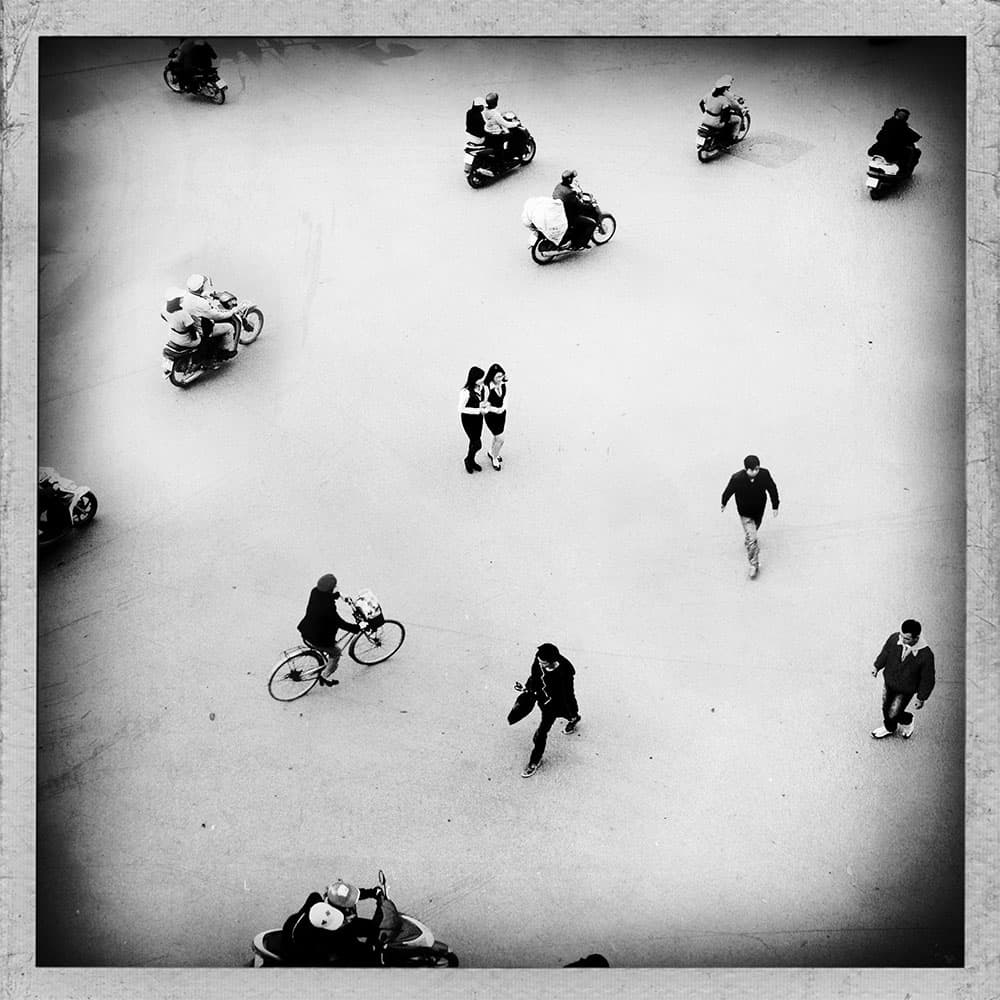
Richard Koci Hernandez, Hanoi, Vietnam 2013
What is street photography? The exact definition of this popular genre is tricky to pin down and means different things to different people. Even the word ‘street’ itself is misleading. Some would argue that it’s not so much about whether the photography is actually carried out in an urban environment; it’s about the kind of images you make. Street photography is more of an attitude, approach or frame of mind.
David Gibson, himself a street photographer for three decades, offers his own broad definition in his new book, 100 Great Street Photographs. ‘The term “street photography”,’ he writes, ‘can be applied to any photographs taken in a public space, with or without the inclusion of people, which are entirely natural, and not set up.’ He goes on to add, ‘Street photography is real, it is ordinary life made extraordinary by a great variety of photographers.’
Accordingly, his book includes a wide range of locations and subjects in its 100 images – from inner-city streets to rural and coastal scenes. Some of the shots he’s chosen are the visual puns or tricks of perspective most people associate with street photography, while others are more thought-provoking and mysterious.
However, the one thing that links these disparate images is that they capture things that occurred naturally and spontaneously in front of the camera and which the photographer had the speed and vision to see and record. Gibson believes that the idea of arranging images goes completely against the spirit of street photography.
‘For me, not setting up images really is the crucial thing,’ he says. ‘I’m a bit of a purist in that sense. I get a bit agitated when I suspect a photographer has set something up. I think it’s cheating. I like to think that the people who do it get found out.’

Shin Noguchi, Tokyo 2016
Images that inspire
Only a small number of the images he has selected for the book have been taken by high-profile figures such as Martin Parr and Alex Webb; mostly they are previously unpublished images, taken by less famous photographers in countries around the world, using everything from Leicas to smartphones. He says the most important selection criterion was that the images inspired him.
‘The pictures in the book had to be great photographs in some way but they also had to set off something in me. I chose ones that triggered my imagination, which must be the premise behind any great photograph – it must stimulate and inspire, and also make you think.’
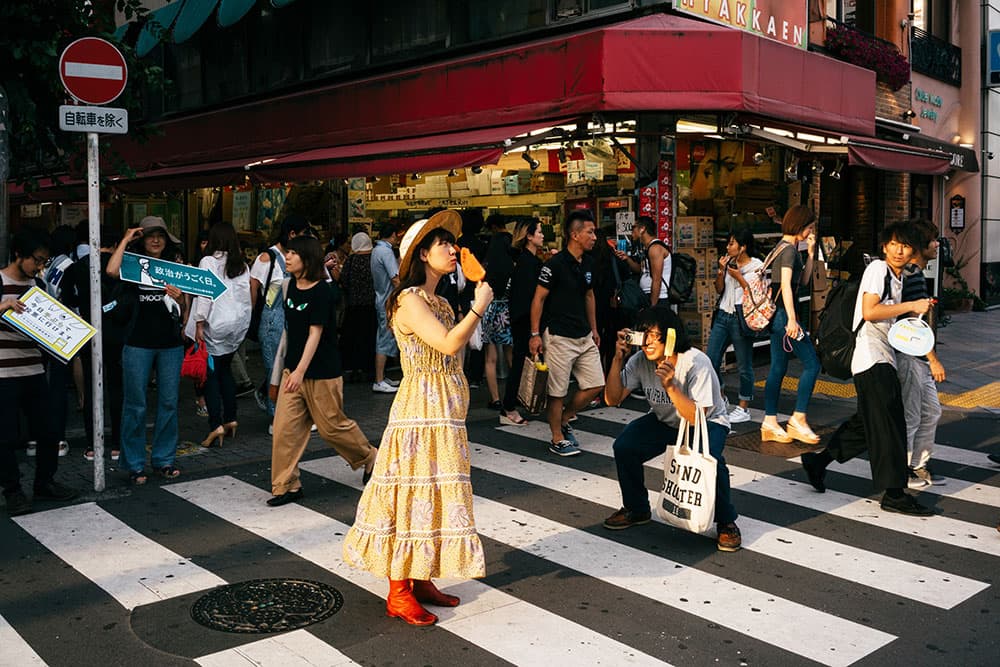
Dan Szpara, Tokyo 2016
Obsession
Gibson has been honing both his own street photography skills and his appreciation of other photographers’ work since the late 1980s. He says his own inspiration to take up street photography initially came from looking at the work of great photographers including Henri Cartier-Bresson, but his camera work took on its own momentum when he became hooked on it.
‘A word I use all the time is obsession, and that really is the root of it all,’ he says. ‘If you’re obsessed by photography, then you do tend to look more. I’ve heard it described as similar to developing a muscle – if you keep exercising it, it becomes stronger. Maybe that’s true.’
He says he prefers to work in a busy city environment, and as he lives close to London it’s the obvious place to go. While he often returns to the same locations out of habit, he says, ‘It’s more about what’s inside my head than the actual place.’ His pictures show a highly developed eye for shape, colour and clever juxtapositions, together with an ability to see humour in the everyday world.
He has used a range of cameras over the years, including a Nikkormat, a Nikon FM2 and a Canon EOS 5D. His current camera of choice for street work is a retro-styled digital compact, the Fujifilm X100T, which has a fixed 35mm lens. ‘When it comes to cameras, I’m old-fashioned in the sense that I have to put it up to my eye,’ he says.
‘For a lot of younger people doing street photography now, the only camera they have ever used is a phone camera. Personally, I find it very difficult to take photographs with the image on the screen wobbling in front of me. However, there are advantages to using a phone, because nobody takes you seriously – they just think you’re a tourist.’
Gibson believes it’s essential for photographers to keep pushing their personal boundaries and trying new things in their work. ‘My main worry is repeating myself,’ he continues. ‘My photography has definitely changed over the years and I take a lot more abstract photos than before. That’s partly to get away from taking clichéd shots. I sometimes go out with my camera set on 1/4sec or 1/8sec for half the day.’
He believes that digital technology, smartphones and sharing images on the internet have changed both the quantity and the type of street images being created. ‘It’s difficult to make absolute comments, but I think there’s been a power shift in the past 10 years,’ he says. ‘It’s like two worlds are coming together – the professional and the social media world – and this non-professional world is maybe, to an extent, imposing a different taste. I find that sometimes great photographs that are more subtle or complex will be overlooked in favour of a simpler photograph.
‘I’ve noticed that with some of my pictures. There are a couple of my photographs which I know or believe to be good, but they go down like a lead balloon online. Then other photographs I’ve taken that are simple and not that good, get loads and loads of “likes”. I think, hang on, you should be looking at my other pictures.’
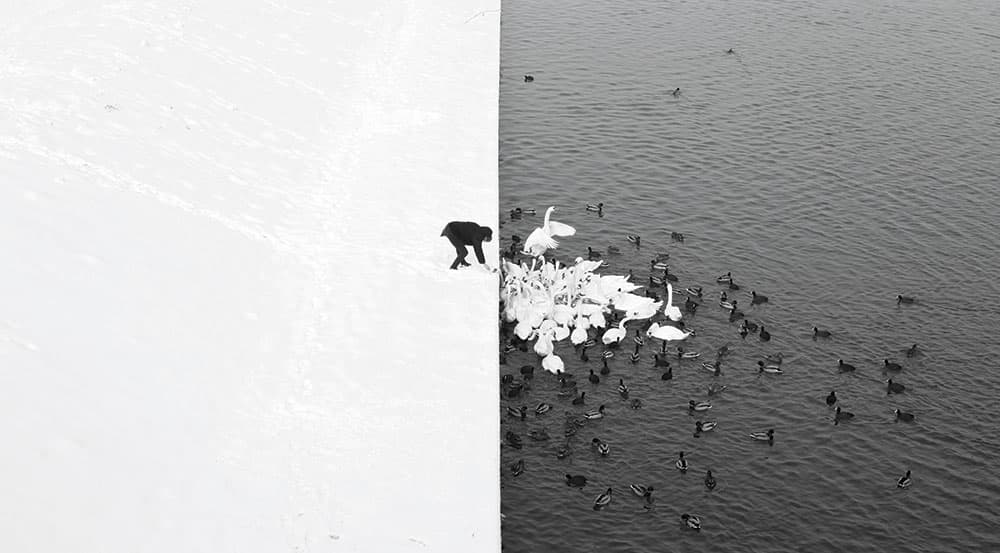
Marcin Ryczek, Krakow 2013
Practicalities
Unlike some photographic genres, where specific techniques can be learned to create particular kinds of images, advice to aspiring street photographers is notoriously difficult to give. Gibson’s main suggestion is that people shouldn’t become obsessed by their own photography.
‘Be obsessed by the photography of others,’ he says, ‘then maybe some of that influence will seep into your own photography. There’s a steep learning curve when you first start, a period where you just soak up and become obsessed by the great photographers, and that’s how people get going.’
He also says people should guard against being complacent about their work. ‘You should always think that your photographs are not good enough,’ he continues. ‘I think there should always be sense of a frustration. Frustration is healthy. Or at least that’s what I tell myself.’
In these more guarded times, when people are much more sensitive about being photographed than in previous generations, the issue of being challenged or stopped from taking pictures is a potential problem for street photographers. However, Gibson believes that if a photographer is careful, the issue should only rarely arise.
‘They shouldn’t get caught in the first place,’ he says. ‘This is another thing I’m very hot on. Avoiding being caught is a very subtle but important thing to learn. That’s where the mindset of being half invisible comes in, and it’s more difficult for some people to do than others. If you’re constantly having confrontations, you’re giving the game away in some way, either in your behaviour or body language.
‘So the basic rule is still “don’t get caught” and sometimes it can be best not to take a photograph. I sometimes feel bad about what I do. It can be a bit furtive and you can have a bad day. I’ve been caught about four times in 30 years. On one occasion, I had a confrontation with some workers and they had a real go at me and started photographing me with their mobile phones. They said, “How do you like it?” And they were right!’
Gibson says it’s important to keep taking pictures even if you’re having a bad day or nothing is going to plan. ‘It always takes shooting a lot of images to get a good one and that’s part of the mystery of it. The frustration of it is sometimes taking absolute rubbish and thinking what you’re doing is a waste of time. I always want the killer photos, which don’t come along very often.’
But that sense of frustration is an essential part of the street photography experience; to follow its spirit of non-intervention is to photograph something that is essentially beyond one’s control. The joy of it all comes when everything falls into place and the elusive ‘killer photo’ results.
‘Sometimes I’m quite surprised that the magic can still happen,’ Gibson says. ‘When I get a good shot I think, “Wow, where did that come from?”’
David’s favourites: Tavepong Pratoomwong
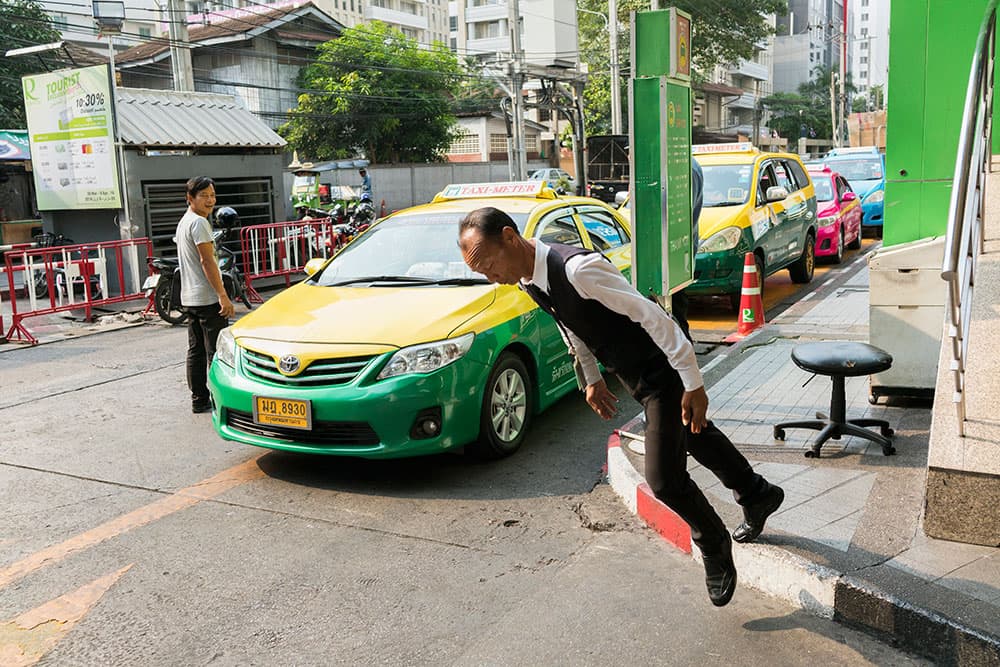
© Tavepong Pratoomwon, Bangkok 2016
‘This picture by the Thai photographer most people refer to as “Pong” is quite surreal,’ says Gibson. ‘He was near a taxi rank, trying to photograph one of the drivers putting eye drops in his eye. Then suddenly this other guy started to perform for him, doing Michael Jackson’s moonwalk. Pong was quite annoyed at first, but he went along with it and got a good shot out of it. It’s not a conventional street shot, but when you look at that photograph you think, what on earth is happening here? And if a photo keeps you looking at it, it must be working.’
David’s favourites: Alain Laboile
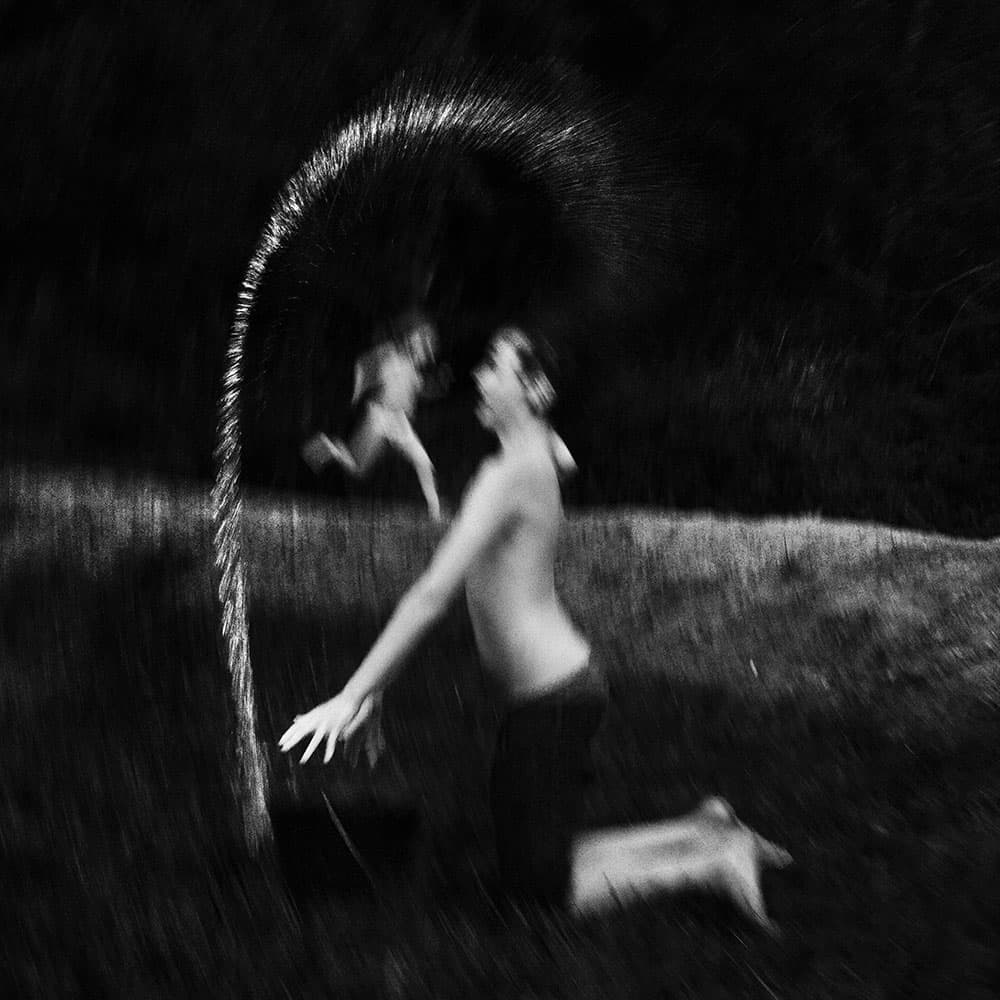
© Alain Laboile
‘I think Alain is such an absolutely amazing photographer,’ Gibson says. ‘I found it difficult to choose just one of his images from the excellent selection he has on offer. All the golden “rules” of street photography go out of the window with him. He doesn’t really do cities; he just photographs his family on a farm in France. So he’s very different from a lot of street photographers, but I’d say he actually documents his family in the tradition of street photography. I think this photograph is truly phenomenal in the way that the boy in the background is framed by the arch of water. That’s really as good as it gets – it’s stunning.’
About David Gibson
Born in Ilford in 1957, David Gibson studied photography at Medway College of Art & Design. Since then, he has combined his career as a street photographer with commercial work and writing about his craft. His book The Street Photographer’s Manual was published by Thames & Hudson in 2014 and his new book, 100 Great Street Photographs, is published by Prestel, price £22.50. He is a member of the street photography collective iN-PUBLiC. For workshops and to see more work, visit www.gibsonstreet.com and www.facebook.com/DavidGibsonStreetPhotographyWorkshops
New to street photography? Check out our Beginners guide to Street Photography here.







